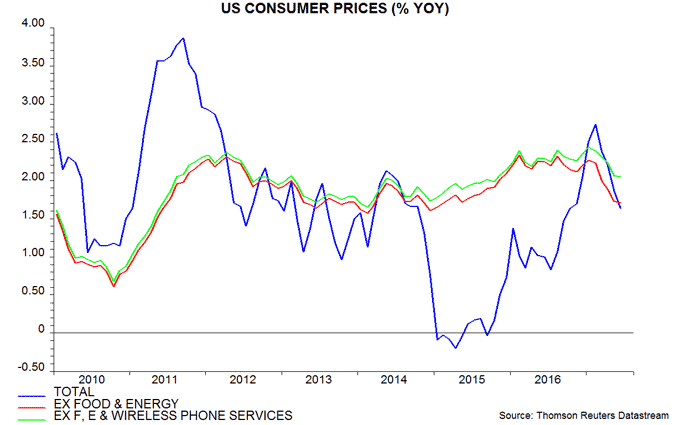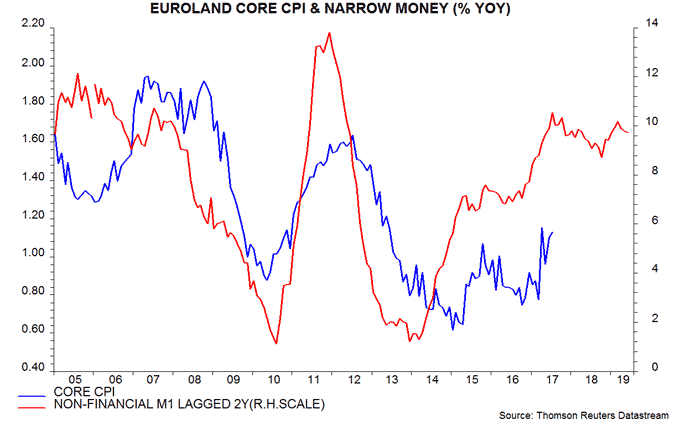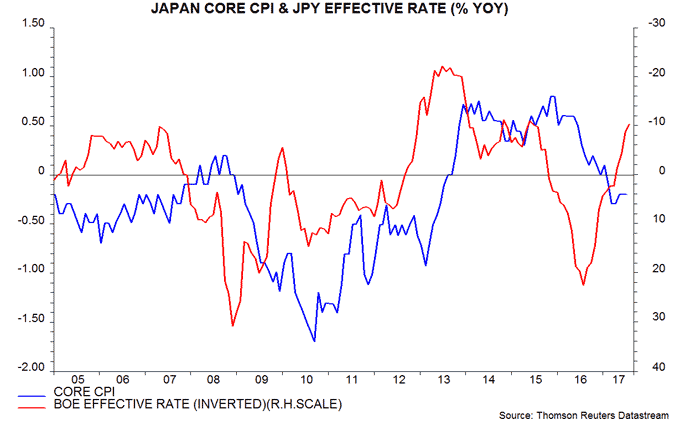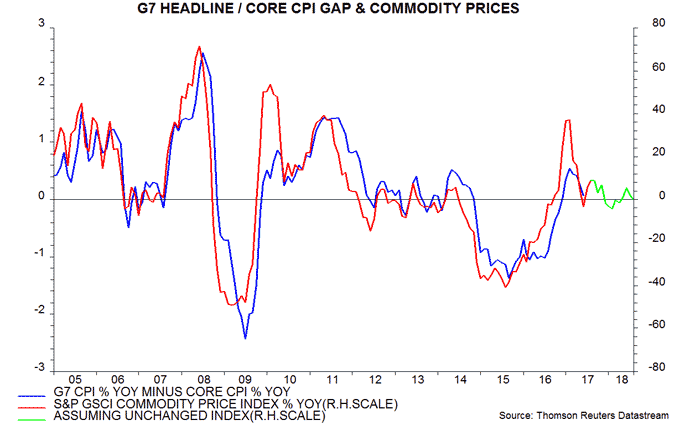A fall in G7 core* consumer price inflation since early 2017 has been driven by a sharp decline in the US. The US drop reflects a combination of a large cut in wireless telephone charges and normal volatility, with the latter suggesting a second-half recovery. Core inflation, meanwhile, may firm in Euroland and Japan, and remain elevated in the UK. A rebound in the G7 core rate coupled with economic reacceleration from late 2017 – suggested by monetary trends – could force faster-than-expected monetary policy tightening.
G7 headline consumer price inflation peaked at 2.0% in February and fell to 1.4% in June. The decline was mainly due to a reduced boost from food and energy prices but, in addition, core inflation subsided from 1.5% to 1.3% – first chart.

The core slowdown was driven by the US, where the core rate dropped from 2.3% in January to 1.7% in June. About one-third of this decline is attributable to a faster decline in wireless telephone charges – down by 13.2% in the 12 months to June versus 4.3% in January. Core inflation excluding such charges was 2.0% in June – second chart.

The remainder of the US core decline probably reflects normal volatility. The three-month change in core prices, seasonally adjusted and annualised, has fluctuated around a mean of 1.9% since 2005, with departures from this level usually short-lived and followed by an opposite deviation – third chart. (The exception was a sustained shortfall in the immediate aftermath of the 2008-09 recession.) The three-month change spiked up to 3.0% in February but has since reversed sharply lower, in line with the historical pattern but with weakness magnified by the cut in wireless charges.

The current low level of the three-month change, even excluding wireless charges, suggests that it will rebound to above the 1.9% average during the second half. A significant overshoot would push up the core annual rate (since core prices rose by an annualised 2.1% during the second half of 2016).
Euroland core inflation has firmed from 0.9% in December to 1.2% in July and may rise further as upward pressure from above-trend economic growth, reflecting earlier monetary strength, outweighs a drag from recent euro appreciation – fourth chart.

The Japanese core rate, meanwhile, may recover as a drag from yen strength into August 2016 is replaced by a boost from subsequent depreciation – fifth chart.

A recovery in G7 core inflation would probably push the headline rate back up, assuming that commodity prices of food and energy are stable at around current levels: the relationship with the annual change in commodity prices suggests that the headline / core gap will rise near term before turning slightly negative around year-end – sixth chart.

*”Core” = excluding food and energy. Japanese measure also adjusted for 2014 rise in consumption tax.